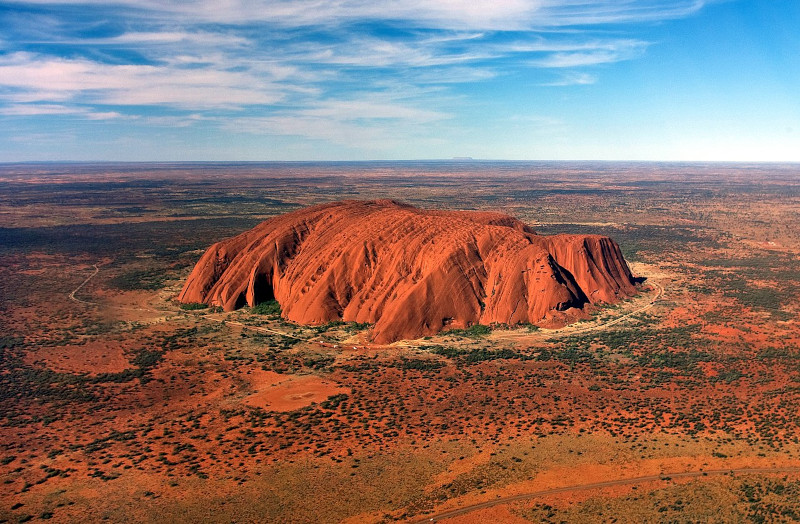Uluru Facts
- This breathtaking creation of time and geological forces is most frequently referred to by the term used by the Indigenous People’s of the area, Uluru. The feature’s also known by another name, though. That’s the english language term of Ayers Rock.
- Local Aboriginal populations, the Pitjantjatjara, knew of the existence of the formation for untold centuries, of course. The first recorded sighting of it by European explorers, however, occurred in 1873. At that time, surveyor William Gosse encountered it.
- Throughout known history, it’s represented a sacred location to some native populations. It plays a prominent role in their traditional mythology. Although various versions exist, many suggest that the area remains inhabited by ancestral creator spirits.
- In modern times, this natural wonder’s been recognized for its unique characteristics. That’s because it’s listed as a UNESCO World Heritage Site. It also represents one of two major features of what now forms the stunning Uluṟu-Kata Tjuṯa National Park.
- The amazing Uluru remains one of the most recognizable landmarks of the country in which it formed. It’s further among the most important indigenous sites in that area. It therefore holds a uniquely important position in the history and culture of that region.
Related Articles
Uluru Physical Description
Most of the geological features similar to it garner appreciation for either their size or their distinctive appearances. Not mighty Uluru, however. That’s true since this masterpiece of natural processes earns its share of respect and admiration for both of these factors.
The amazing site does indeed boast highly respectable physical dimensions. Its upper surface attains a height measuring roughly 1,142 ft (348 m). This places its highest point at just about 2,831 ft (863 m) above sea level. It’s overall shape also roughly resembles an oval.
At its widest point, the structure meaures 2.2 mi (3.6 km) in length. This, combined with a maximum width of about 1.5 mi (2.4 km) provides the oval shape. These dimensions further serve to provide this wonder of Nature with a circumference equaling 5.8 mi (9.4 km).
Yet what one sees above ground is only the smaller part of the remarkable Uluru. That’s because the majority of its mass actually remains below ground. What does remain above the surface, however, easily attracts the eye. It’s impressive for more than just its sheer size.
It also earns a high degree of appreciation for its visual appeal. That’s largely due to the unique color scheme it presents to those fortunate enough to visit it. These colors change with the seasons, and time of day. Thus, it often glows red, but only at sunset and dawn.
Uluru Location, Formation, and Ecology
The mind-boggling majesty of Uluru perfectly fits in with the abundance of natural beauty in the area in which it lies. That’s due to the fact that it formed in a very special part of the globe. More precisely, the site formed on what now constitutes the continent of Australia.
There, though, it sits in the southern portion of what’s known as the Northern Territory of the country. Its exact location places it 208 mi (335 km) southwest of the town of Alice Springs. This position also happens to locate it very close to the center of the continent.
The magnificent structure further owes its primary coloring to its unique composition. The majority of that consists of native sandstone. This originally began as sand, deposited during the early Cambrian period. Experts place its age at between 530 – 550 million years.
It’s also a residue of that formation. The entire surrounding, nearly flat plain was also part of that process. That portion of it, however, eroded over time. The area that later formed Uluru had a more homogenous nature. This specific characteristic prevented it from later eroding.
The incredible structure also plays host to a surprising array of flora and fauna. Historically, in fact, a total of 46 native mammalian species once lived there. Now, though, only 21 remain. Some of these include bats, woma pythons, and a marsupial mole, among others.
This site further supports numerous types of plants. Some even have medicinal uses. These include a variety of trees, flowers, shrubs, and grasses. This list also includes several rare and endangered species. Most of these, however, appear near the base of the structure.
Features Sharing Its Region
Check out our other articles on 5 Magnificent Mammals of Colombia, European Honey Buzzard, Laguna Verde, Snowshoe Hare, Delta Green Ground Beetle, 5 Amazing Animals of Greece

